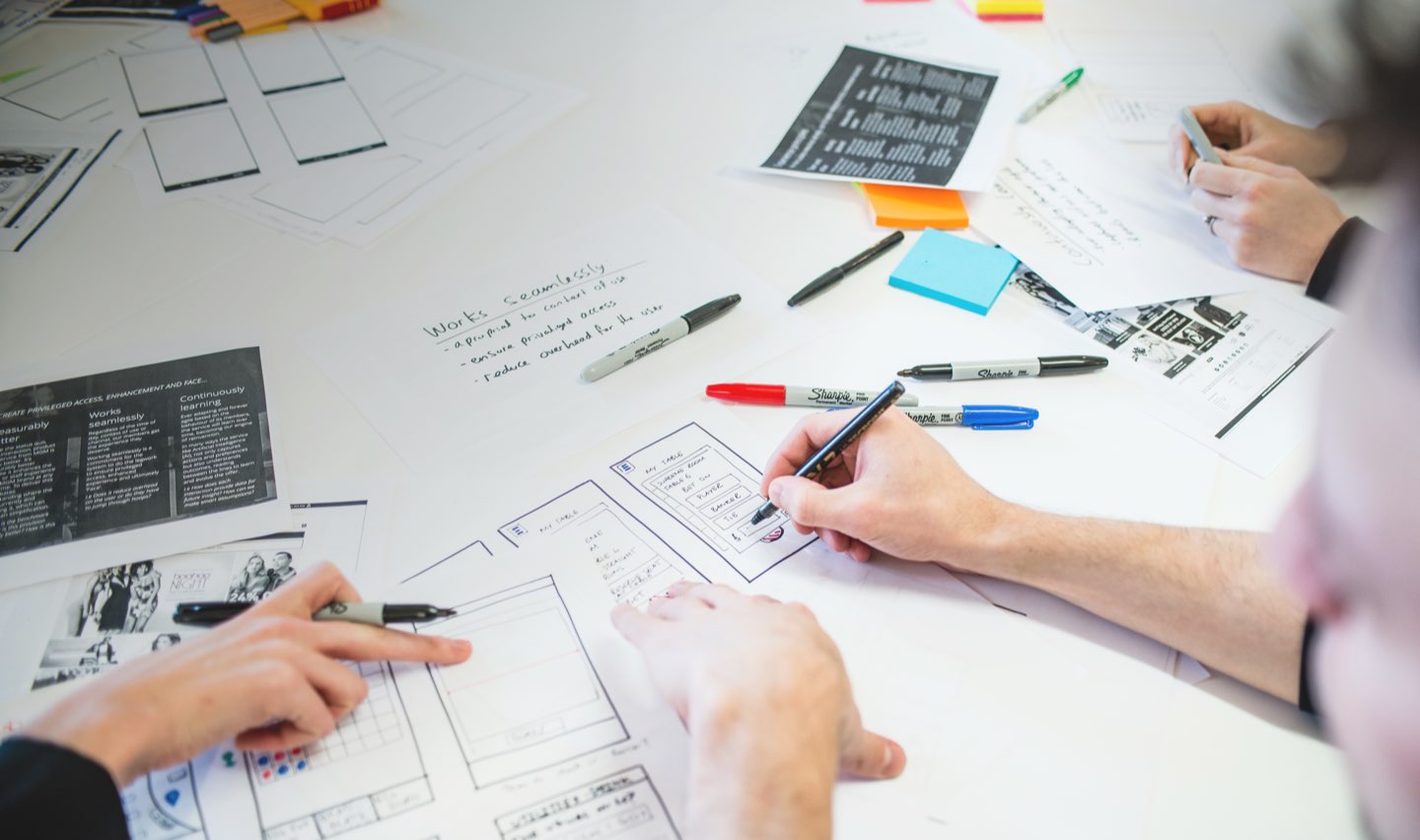Design System Audit
One size does not fit all
Design systems come in all shapes and sizes: ranging from single-team, core toolkits to global, federated systems that are fully integrated to product and service development. So, what does your business need?
Before we can get to the right toolkits and workflows, we start with an audit. Because, in order to put in place an effective system, you need to know where you are right now and where you’re heading.
Introduce a system that offers too little and your needs will not be met; too much too soon and it gets in the way. Knowing where to strike the balance is critical. The system has to serve you and not the other way around.
To share how we at ELSE approach different briefs, we’ve considered the four following scenarios:
1. Launching a digital product
This streamlined approach is all about helping you turn your ideas into tangible assets faster.
When launching something new, it can be unclear how the whole thing works as a system. But there may be some hero moments in the experience that you’ve identified as the kernels of the new idea. We call these landmarks and we use them as start points to build user stories that will help us define the paths, edges, districts and nodes of the experience. These user stories give us an interaction blueprint that allow us to define key and basic components.
We set up a series of workshops and co-working sessions and use the results to inform the structure of the subsequent design sprints. Together, we’ll develop a core toolkit of components and create an efficient workflow for your product team that will help you prototype and test concepts more effectively.
2. Extending your capabilities
A lot of clients come to us when they want to build on a product or service they already have, but their current design system doesn’t cover their new needs.
At ELSE, we believe that in order to be in a position to seamlessly blend the old with the new, we need to understand the capabilities and limitations of the current system. A full component audit will show us what works well, what can be re-used, what can be re-purposed and what needs designing from scratch.
By looking at the design system library, design templates, and live pages, we can understand how your current design system is used and implemented. We will then conduct a gap analysis to identify where we need to fill in the blanks with components and patterns that work in synergy with the already existing system.
Finally, once the new functionality is defined, we will help you create a design debt backlog and put a plan in place to tackle it in future sprints.
3. Consolidating multiple systems
Whether we’re working with a single co-located team, or multiple remote product teams, the starting point is the same: The audit. For us, the only difference between the two is scope.
At an enterprise level, before starting the consolidation exercise, we need to analyse all the different systems in use: understand their similarities and differences, capabilities and limitations. We look at all design and content authoring systems as well as development frameworks and platforms. Only once we understand the capabilities and limitations of the authoring environment can we create an effective new design system.
With the audit complete, we will help you create a priority list for your entire business, based on the delivery roadmap of each team, and plan a programme of design sprints to deliver the consolidated design system.
At ELSE, we’ve seen first-hand that a design system can’t be put in place in isolation and that the process needs to be inclusive. To do that, we’ll work with you to identify key people and departments within your organisation, create a collaborative working group, and help you put in place the right communication channels and ceremonies.
4. Assessing design maturity
Design teams need to operate in the right conditions in order to deliver meaningful work for your business. More often than not, when teams work in silos, they can feel isolated both from the business and from other product teams. In these situations, objectives become too narrow and teams lose sight of the bigger picture.
Establishing the right communication channels and transparency is important to make product teams feel included. It’s vital to help them understand how their work contributes – in a meaningful way – towards something greater.
At ELSE, we’ve established a set of techniques and tools to help you identify how to bring fragmented teams closer together. The process can give you insight into workflow inefficiencies, expose bottleneck areas, and help you establish KPIs in order to measure the effectiveness of your future efforts.
We work with businesses at all stages of their development and offer bespoke solutions to make sure you get exactly what you need, and only what you need, in order to maximise impact. Get in touch if you’d like to get the measure of your design system.
Views from ELSE
From ticking off deliverables to goal-based working In the design business, to cite Blair Enns, we ‘sell’ one of three things — INPUTS (our time), OUTPUTS (our deliverables) and, if we’re well-positioned, OUTCOMES (the future value we bring). Truth is,…
Knowing the marketplace today is evolving faster than ever, and along with customer’s ever-shifting expectations, the pressure to innovate is greater than ever. Effective design can help your business discover future value.

